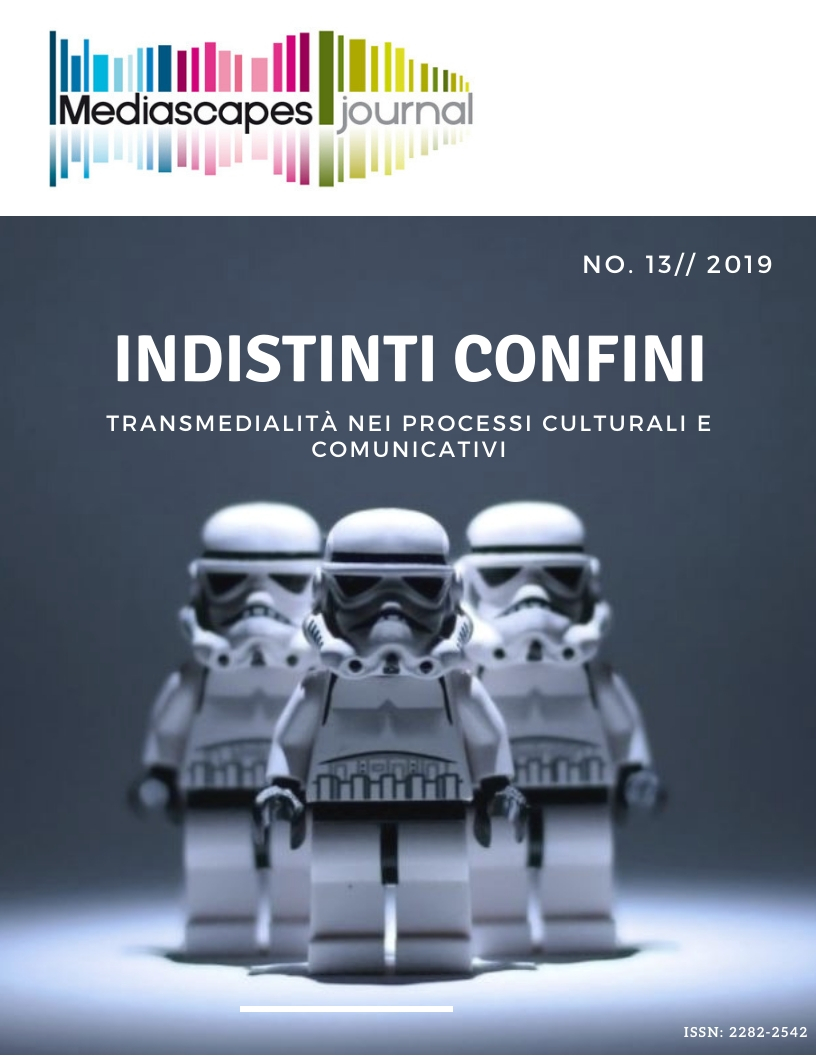Da Triumph des Willens a Der Fuehrer's Face: Forme aurorali di transmedialità nella propaganda della Seconda guerra mondiale
Abstract
Media were one of the main battlefields of the Second World War: propaganda, censorship, and counter-propaganda activities forged the imagery of war, selectively informing millions of people through a network of visual media: films, newsreels, animated short films, and comics. This article aims to highlight a specific transmedia path that involves the United States and Germany. The extremes of this trajectory are the film Triumph des Willens (1935) by director Leni Riefenstahl, and the Disney short film Der Fuehrer's Face (1943). Riefenstahl's film focuses on the Nazi Nuremberg Rally of 1934 and has been interpreted from time to time as a form of documentary testimony, propaganda product, or cinematographic art. Each of these dimensions is present in the film, which became a primary reference for the imaginary of the twentieth century. Between 1942 and 1945, the American director Frank Capra made a series of short films for war newsreels: Why We Fight is perhaps the most famous example of American counter-propaganda, and takes entire sequences of the Triumph. The transition between German and American media shows not only the migration of images but a particular appropriation which re-signifies German propaganda by turning it against itself. We also find satirical forms: in 1942 the British government distributed Lambeth Walk, a short-film that reworked Riefenstahl's work to ridicule Hitler, combining a famous popular song with the images of marches and parades. In less than a decade Triumph des Willens shows its great seductive power, and its influence its traced in famous works of American cinematography; an example is The Great Dictator (1940) by Charlie Chaplin. The linkages of transmediality expanded very soon, involving animated short-films and comics in 1942, two mass media that were an integral part of the American propaganda. Without the Riefenstahl's films, one could not comprehend a short-film like Der Fuehrer's Face, produced by the Disney studios for the American public and its allies. This Disney short-film won the Academy Award, and still maintain its effectiveness, so much so that in 2010 it was censored by a Russian court as “extremist material”. The play of echoes and cross-references between media clearly shows the communicative nature of propaganda, that is, the selective and positive control of information (for emphasis). Thus, censorship is the inevitable complement, through a selective denial. Censorship seeks to limit the seductive power of images, that excess of meaning which cannot be totally enunciated or rationalized but only perceived. Satire also testifies the active power of images, rendered through a re-signification that defuses the narrations of authority. Unlike censorship, which hides, satire shows to criticize, through an illegitimate appropriation of images##submission.downloads##
Pubblicato
2019-12-23
Come citare
Martellozzo, N. (2019). Da Triumph des Willens a Der Fuehrer’s Face: Forme aurorali di transmedialità nella propaganda della Seconda guerra mondiale. Mediascapes Journal, (13), 86–97. Recuperato da https://rosa.uniroma1.it/rosa03/mediascapes/article/view/16356
Fascicolo
Sezione
Saggi
Licenza
Gli autori che pubblicano su questa rivista accettano le seguenti condizioni:
- Gli autori mantengono i diritti sulla loro opera e cedono alla rivista il diritto di prima pubblicazione dell'opera, contemporaneamente licenziata sotto una Licenza Creative Commons - Attribuzione che permette ad altri di condividere l'opera indicando la paternità intellettuale e la prima pubblicazione su questa rivista.
- Gli autori possono aderire ad altri accordi di licenza non esclusiva per la distribuzione della versione dell'opera pubblicata (es. depositarla in un archivio istituzionale o pubblicarla in una monografia), a patto di indicare che la prima pubblicazione è avvenuta su questa rivista.
- Gli autori possono diffondere la loro opera online (es. in repository istituzionali o nel loro sito web) prima e durante il processo di submission, poiché può portare a scambi produttivi e aumentare le citazioni dell'opera pubblicata (Vedi The Effect of Open Access).


